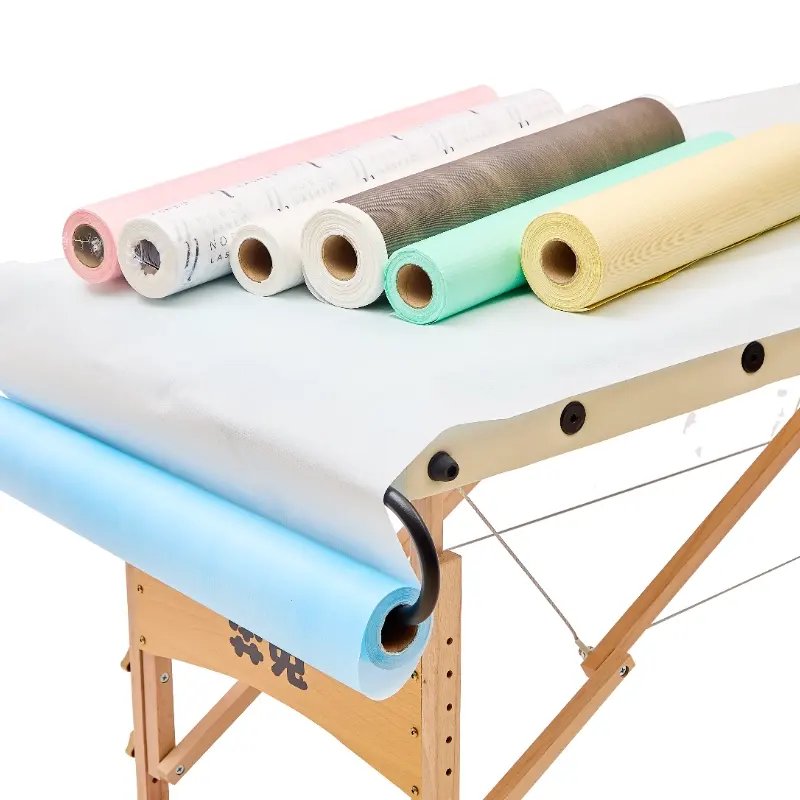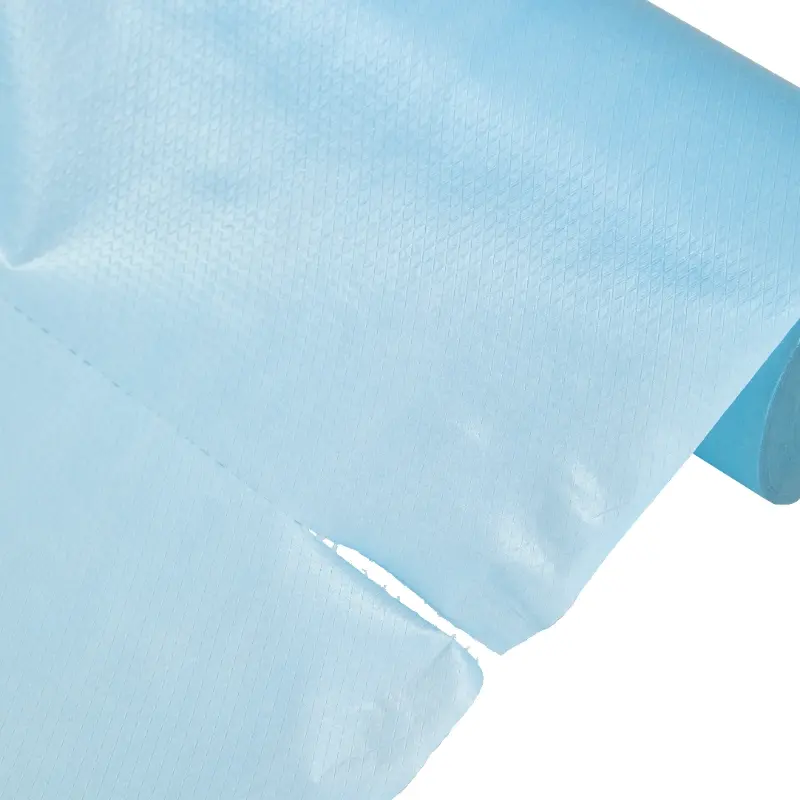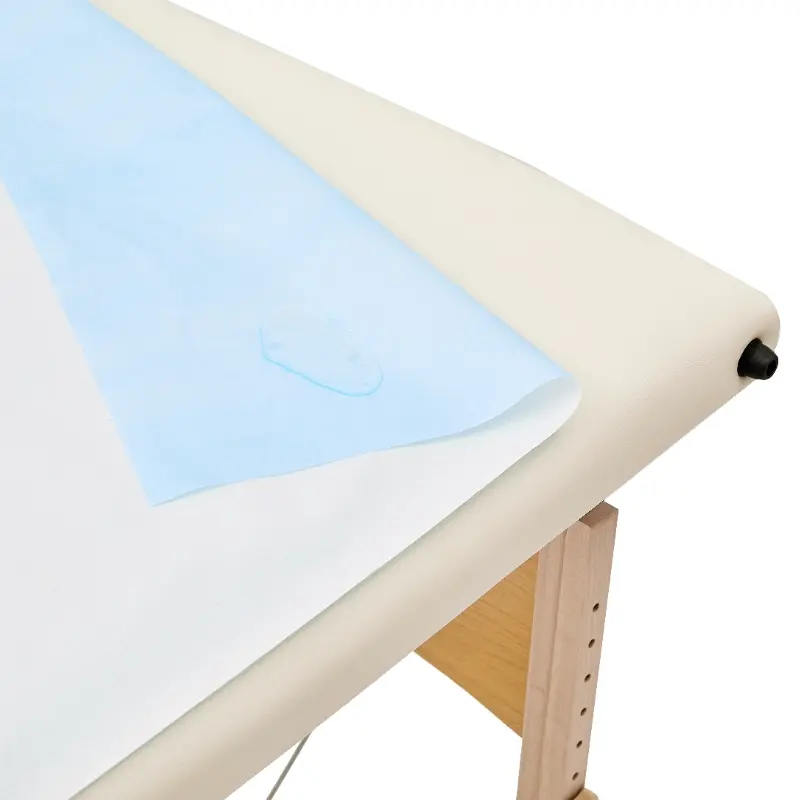In medical environments, examination table paper plays a crucial role, especially in hospitals, clinics, and operating rooms. Its primary function is to provide patients with a hygienic, comfortable, and sterile surface, preventing cross-contamination while offering medical staff a convenient working space. Therefore, selecting a high-quality examination table paper roll is essential. Below, Telijie explains the key factors to consider when judging the quality of paper.
The thickness and toughness of the paper are among the most basic standards. Examination table paper must endure significant pressure and friction during regular use, so its thickness and toughness directly impact its durability and effectiveness. Paper that is too thin may tear or deform, failing to meet the high demands of use. On the other hand, overly thick paper may improve durability but could hinder smooth unfolding and increase costs. Therefore, an ideal table paper roll should have an appropriate thickness, offering effective protection against damage without being excessively heavy, which could lead to unnecessary waste.
The absorbency of the table paper is also important. Medical settings often involve contact with liquids, such as sweat, blood, or bodily fluids. If the paper has poor absorbency, liquids will quickly penetrate and spread, which may lead to infection transmission and even disrupt medical procedures. High-quality table paper sheet roll should have strong absorbency, capable of quickly soaking up liquids to prevent their spread to the patient or staff. Additionally, paper with good absorbency helps keep the surface dry, preventing discomfort for patients who might otherwise come into contact with damp paper.
Softness and comfort are other important evaluation criteria for examination table paper. Patients often need to come into direct contact with the table surface during examinations or treatments, making the paper's softness and texture critical. Paper that is too stiff can cause discomfort or even skin irritation, especially for infants or patients with sensitive skin. Soft paper enhances patient comfort and better conforms to their body shape, reducing unnecessary movement and improving the accuracy of examinations and treatments. Medical staff also prefer using soft paper, as it enhances patient experience and reduces friction during procedures.
The smell of the paper is another key factor in assessing its quality. In a medical environment, air quality is crucial, and any strong odors can affect patient comfort and mood, potentially triggering allergic reactions. High-quality table paper should be free from strong chemical or bleach odors. Inferior paper may contain harmful chemicals or bleach agents, which could cause allergic reactions and negatively impact the hospital environment. Odor-free paper ensures fresh air and helps avoid adverse health effects on patients.
Environmental sustainability is becoming an increasingly important consideration in the medical industry’s purchasing standards. As environmental awareness grows, more hospitals and clinics are opting for eco-friendly, non-polluting table paper products. High-quality paper should be made from biodegradable materials and free of toxic substances, such as chlorine bleach. Eco-friendly paper aligns with sustainable development principles and reduces negative environmental impacts. Additionally, using eco-friendly materials typically makes the paper safer for patients, minimizing potential health risks from chemical substances.
Durability and tear resistance are key factors influencing the lifespan and effectiveness of disposable examination table paper. In medical environments, table paper needs to be frequently changed and quickly unrolled during replacements. If the paper is not durable, it may tear or break during use. Particularly in operating rooms or treatment areas, table paper must have high tear resistance to maintain integrity under heavy usage. Durable paper reduces the frequency of replacements, enhances operational efficiency, and minimizes medical resource waste.
The tightness and firmness of the roll are also details to consider when evaluating table paper quality. The roll's consistency directly affects its ease of unfolding and overall usability. Ideal table paper should have a uniform roll tightness and firmness, ensuring smooth unrolling during each use and preventing waste or inconvenience caused by loose or uneven rolls. Paper with a loose roll may curl or tangle, negatively affecting the user experience, while overly tight rolls may be difficult to unroll or too labor-intensive. Proper roll tightness improves the efficiency of the paper’s use, saving time and effort.
Price and cost-effectiveness are also factors that many medical institutions consider when choosing table paper. Although high-quality paper tends to be more expensive, its durability and reduced replacement frequency can save hospitals or clinics money in the long run. Therefore, when selecting table paper, it is important to consider not just the unit price but also its durability, comfort, absorbency, and other performance factors to achieve the best value for money.
Choosing high-quality table paper requires a comprehensive evaluation from multiple aspects. Factors such as thickness, toughness, absorbency, softness, odor, environmental sustainability, and durability all directly affect the hygiene, comfort, and efficiency of the medical environment. By carefully selecting paper that meets these standards, the health of patients can be better safeguarded, and the quality of medical services can be improved.
Telijie exam table paper roll provides a fresh, sanitary surface for each patient, protecting the table from moisture, rips, and spills. Available in smooth glazed or crepe options, the paper is bright white with high wet-strength for maximum protection. Offered in various sizes (18"x125', 18"x225', 21"x125', 21"x225') and packaged with 1 roll per shrink bag, 12 rolls per carton, it ensures cleanliness and hygiene during medical exams.



